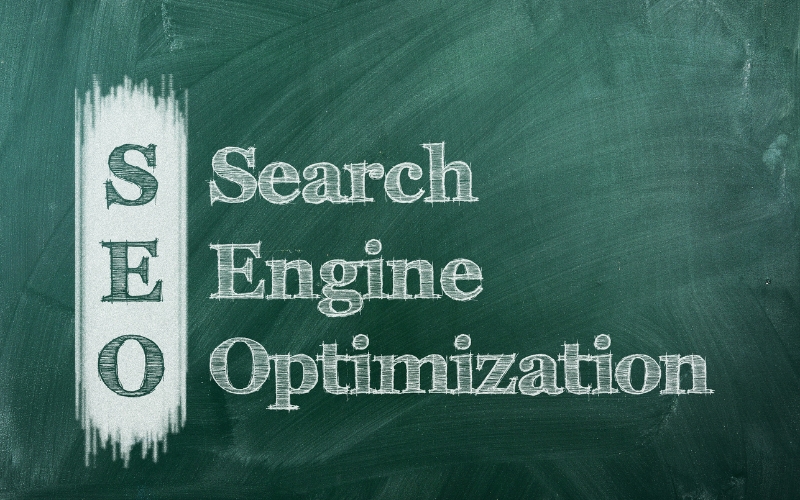In today’s digital age, Website Speed in SEO is a critical factor that influences everything from rankings to user engagement and conversion rates. A slow website not only affects the user experience but also harms your website’s performance in search engine results, leading to lost traffic and potential customers. Google’s algorithms take Website Speed in SEO into account when ranking websites, with Core Web Vitals playing a key role in determining search visibility. Moreover, slow load times can increase bounce rates and reduce user interaction, making it difficult to retain visitors. This article explores the multifaceted role of Website Speed in SEO, user experience, and conversions, offering actionable strategies to optimize performance and drive better results for your business.
How Website Speed Impacts SEO Rankings

In today’s fast-paced digital landscape, Website Speed in SEO is no longer just a nice-to-have feature—it’s a crucial factor that directly impacts your website’s SEO rankings. Search engines like Google prioritize user experience, and a fast-loading website is at the heart of delivering that experience. Here’s an in-depth look at how Website Speed in SEO influences rankings, from its relationship with search engine algorithms to its impact on crawl rate and indexation.
The Relationship Between Page Load Time and Search Engine Algorithms
Page load time plays a significant role in determining a website’s ranking in search engine results pages (SERPs). Search engines aim to provide users with the most relevant and user-friendly results. A slow website can frustrate users, leading to a higher bounce rate, which signals to search engines that your site may not be the best choice for users.
Google, in particular, uses Website Speed in SEO as a ranking factor. The search engine giant introduced page speed as a consideration in its algorithm back in 2010, initially focusing on desktop performance. With the rise of mobile browsing, Google expanded this emphasis to mobile page speed in 2018, further underscoring its importance. Websites that load quickly are more likely to rank higher because Website Speed in SEO offers a better overall experience for users.
Google’s Emphasis on Core Web Vitals as a Ranking Factor
In 2021, Google introduced Core Web Vitals, a set of specific metrics designed to measure user experience. These metrics include:
- Largest Contentful Paint (LCP): Measures loading performance and aims for content to load within 2.5 seconds.
- First Input Delay (FID): Assesses interactivity, with an ideal response time of less than 100 milliseconds.
- Cumulative Layout Shift (CLS): Tracks visual stability to ensure the page doesn’t shift unexpectedly during loading.
Core Web Vitals are now integral to Google’s ranking algorithm. If your website fails to meet these benchmarks, it risks losing visibility in search results, no matter how relevant your content may be. By improving Website Speed in SEO, you not only align with Google’s requirements but also create a seamless experience for your users.
The Consequences of Slow Website Speed on Crawl Rate and Indexation
Slow-loading websites can also hinder the process of crawling and indexing, two critical aspects of SEO. Crawling refers to the process by which search engine bots navigate your site to discover and understand its content, while indexing involves adding your site’s pages to the search engine’s database.
- Limited Crawl Budget: Search engines allocate a specific “crawl budget” to each website, determining how many pages their bots will crawl within a certain timeframe. A slow website consumes this budget inefficiently because it takes longer for the bots to navigate through each page. Improving Website Speed in SEO ensures that the crawl budget is used effectively, enabling bots to access and index more pages efficiently.
- Missed SEO Opportunities: Pages that are not crawled or indexed won’t appear in search results, reducing your site’s visibility and organic traffic. For large websites, slow Website Speed in SEO can limit the bots’ ability to reach essential content. Enhancing Website Speed in SEO minimizes this risk, helping all key pages appear in search engine results.
Ultimately, prioritizing Website Speed in SEO directly influences search engine rankings, ensuring better crawlability, indexation, and user satisfaction.
The Connection Between Website Speed and User Experience

Website speed plays a critical role in shaping user experience, which directly impacts how visitors perceive your brand and interact with your site. In a world where instant gratification drives consumer behavior, a slow-loading website can lead to lost opportunities, frustrated users, and a tarnished reputation. Website Speed in SEO is a crucial factor for businesses aiming to retain visitors, build trust, and drive conversions. Understanding the connection between Website Speed in SEO and user experience helps address key areas like bounce rates, session duration, user trust, and mobile browsing.
How Page Speed Affects Bounce Rates and Session Duration
Bounce rate is a key metric that reflects the percentage of visitors who leave a website after viewing just one page. High bounce rates are often a direct result of slow website speeds. According to studies, nearly 40% of users abandon a website if it takes longer than three seconds to load. For every second of delay in page load time, Website Speed in SEO becomes a pivotal challenge, significantly increasing the likelihood of a visitor leaving the site without taking any action.
Slow-loading websites not only lead to higher bounce rates but also reduce session duration—the total time a user spends on a site. By prioritizing Website Speed in SEO, businesses can ensure fast-loading pages that encourage visitors to explore more pages, interact with content, and engage with calls-to-action (CTAs). In contrast, ignoring Website Speed in SEO frustrates users, prompting them to exit prematurely. For businesses, improving Website Speed in SEO means fewer missed opportunities to convert potential customers into loyal clients.
The Psychological Impact of Slow-Loading Websites on User Trust and Engagement
- Website Speed in SEO doesn’t just affect user behavior—it also influences how users perceive your brand. A slow website creates a negative first impression, leading users to question the professionalism and reliability of your business. In contrast, a fast-loading website signals efficiency, competence, and a customer-focused approach.
- Trust and Credibility: Visitors are less likely to trust a brand with a slow website. Delays can make your business appear outdated or unprepared to handle user demands. For industries like e-commerce, where trust is paramount, Website Speed in SEO plays a critical role in maintaining sales and customer loyalty.
- Frustration and Abandonment: Slow load times cause frustration, leading users to abandon your site and seek alternatives—often your competitors. This not only reduces conversions but also impacts Website Speed in SEO, damaging your brand reputation in search engine rankings.
- Reduced Engagement: Engaged users are more likely to spend time exploring your website, sharing content, or completing desired actions such as filling out a form or making a purchase. A slow website disrupts this engagement, reducing the likelihood of meaningful interactions and undermining Website Speed in SEO efforts.
Mobile-First Browsing and the Importance of Speed in Retaining Users
With mobile devices accounting for the majority of internet traffic, ensuring fast load times on mobile platforms is critical. Mobile users often have less patience for slow websites due to varying network speeds and data limitations. Website Speed in SEO becomes even more essential as Google’s mobile-first indexing relies on mobile optimization for rankings.
- Responsiveness and Adaptability: A fast, responsive website that adapts seamlessly to mobile devices enhances the browsing experience. This is crucial for retaining users who expect quick access to information and contributes to Website Speed in SEO performance.
- Core Web Vitals for Mobile: Metrics like First Input Delay (FID) and Largest Contentful Paint (LCP) take on added significance for mobile browsing. Ensuring these metrics are optimized improves user satisfaction and strengthens Website Speed in SEO, improving your visibility online.
- Competitive Advantage: In a market flooded with competitors, a fast-loading mobile website can set your business apart. When optimized properly, Website Speed in SEO makes it easier for users to navigate and engage with your content,
Improving Website Speed for Better Conversions

In today’s digital landscape, website speed has a profound impact on conversion rates. A fast-loading website not only enhances the user experience but also influences customer decisions, leading to higher engagement and sales. Studies show that even a one-second delay in page load time can result in a 7% reduction in conversions. To optimize your website’s speed and drive better results, it’s essential to focus on performance-enhancing strategies, leverage tools like Content Delivery Networks (CDNs), and learn from real-world examples of speed optimization. Let’s explore these aspects in detail.
Strategies to Optimize Website Performance
Improving website performance starts with identifying and implementing key optimization techniques. Here are some of the most effective strategies:
- Image Compression: Images often account for the largest portion of a webpage’s size. By compressing images using tools like TinyPNG or ImageOptim, you can significantly reduce their file size without compromising quality. Converting images to modern formats like WebP further enhances speed.
- Browser Caching: Browser caching stores static files like images, CSS, and JavaScript on a user’s device, allowing the site to load faster on subsequent visits. Implementing caching mechanisms ensures that returning visitors experience minimal load times.
- Minification of Code: Reducing the size of HTML, CSS, and JavaScript files by removing unnecessary characters, spaces, and comments (a process known as minification) helps decrease load times. Tools like UglifyJS and CSSNano can automate this process.
- Lazy Loading: Lazy loading delays the loading of non-critical resources, such as images and videos, until they are needed. This reduces the initial page load time and improves performance, especially on content-heavy websites.
- Reducing HTTP Requests: Each element on a webpage, such as scripts, images, and stylesheets, requires an HTTP request to load. Combining files, using CSS sprites, and limiting external scripts can minimize these requests and enhance speed.
- Optimizing Server Response Time: Choose a reliable hosting provider with high-speed servers. Regularly monitor server performance and address issues like overloaded servers or inefficient configurations.
The Role of Content Delivery Networks (CDNs) in Speeding Up Load Times
A Content Delivery Network (CDN) is a network of servers distributed across multiple locations that store cached versions of your website’s content. CDNs help reduce latency by delivering content from a server closest to the user’s geographical location. This is particularly beneficial for websites targeting a global audience.
- Faster Load Times: CDNs distribute the load of delivering content, ensuring users experience faster load times regardless of their location.
- Improved Reliability: CDNs reduce the risk of server downtime by balancing traffic loads across multiple servers, ensuring your website remains accessible during peak usage.
- Enhanced Security: Many CDNs offer protection against DDoS attacks and other threats, contributing to a more secure website.
Popular CDN providers like Cloudflare, Akamai, and AWS CloudFront make it easier for businesses to implement this technology and improve performance.
Case Studies: The Impact of Speed Improvements on Conversion Rates
Real-world examples highlight the transformative effects of website speed optimization on conversion rates. Here are a few noteworthy cases:
- Amazon: The e-commerce giant found that a 100-millisecond improvement in load time increased their revenue by 1%. This shows how even minor speed improvements can lead to significant financial gains.
- Walmart: Walmart reported a 2% increase in conversions for every one-second improvement in page load time. Their comprehensive optimization efforts included image compression, faster server response times, and CDN implementation.
- BBC: The BBC observed that they lost 10% of users for every additional second their site took to load. This led them to invest in speed optimization measures to retain their audience.
These examples underscore the direct correlation between website speed and user behavior. Faster websites not only attract more visitors but also encourage them to complete desired actions, such as making purchases or signing up for services.
Conclusion
In conclusion, website speed plays an indispensable role in determining your website’s success. A fast-loading site not only improves SEO rankings by aligning with search engine algorithms like Google’s Core Web Vitals but also enhances user experience, reducing bounce rates and boosting session durations. Moreover, optimizing for speed is crucial for conversions, as users are more likely to complete desired actions on fast-loading websites. By implementing strategies like image compression, leveraging Content Delivery Networks (CDNs), and prioritizing mobile-first design, businesses can ensure their website delivers optimal performance. As speed becomes increasingly important in today’s online ecosystem, investing in website optimization is essential for staying ahead of competitors and meeting user expectations.

